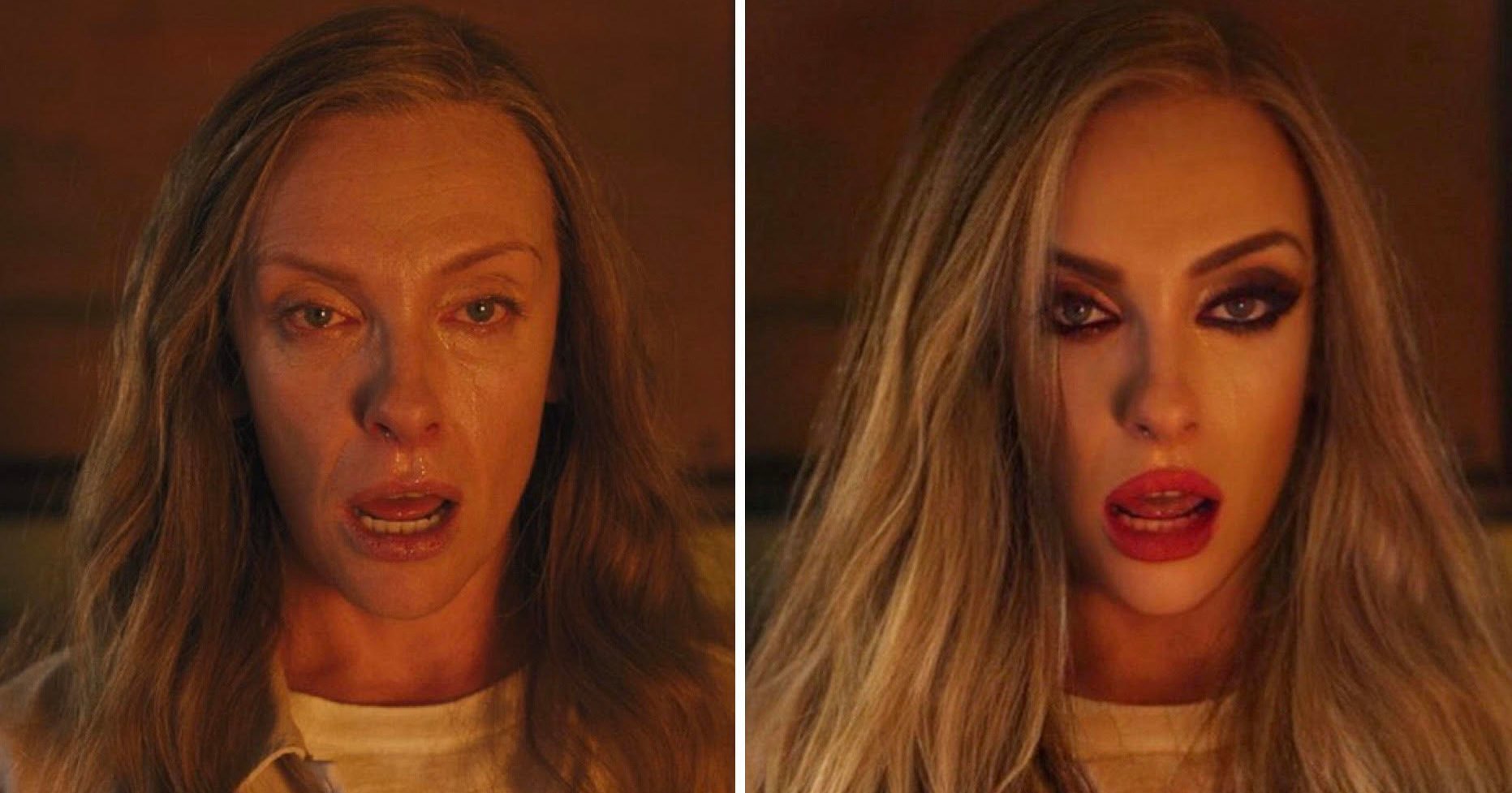
Take a famous figure, literally anyone from Peter Falk to Charles II of Spain. Then blow out their hair, plump their lips, engrave a contour and make them shimmer. This purposefully tacky form of image manipulation is known as yassification and your timeline has probably been inundated with yassterpieces in recent days.
The ur-tweet for the meme consisted of two images of Toni Collette’s character in Ari Aster’s 2018 cult horror film Hereditary. In one she looks just as she does in the film, her face agape in horror as she watches someone burn alive in front of her. In the second image she has been yassified, her face besmeared in foundation, her lips thick and rouged, her eyes kohl’d and her hair balayaged. Once yassified, Collette’s Munchian expression of utter terror becomes weirdly sexual and she looks as if she is staring down a Babestation camera. It is the face that launched a thousand memes.

The term “yassification” actually predates the meme. According to the Urban Dictionary, yassification was first defined by someone only known as “yaass queen” on 23 March 2021. In their definition, they state that “yassification means that it’s like so much better than everything else and you can’t do anything about it. also it’s gay.” If one wanted to use the term in the context of a sentence, yass queen proffers an example: “Elton John is the yassification of Billy Joel”.
“Once yassified, Toni Collette’s Munchian expression of utter terror becomes weirdly sexual. It is the face that launched a thousand memes”
If it weren’t already obvious, we are deep in homosexual territory here. The term “yass” has been embraced by the queer community in recent years as an expression of overwhelming approval and sheer jubilance. Hence, yassification is a sort of proxy transubstantiation, an act by which something or someone is made undeniably queer.

Yassification can also be easily read as a critique of influencer culture. The app in which the yassification edits are made, FaceApp, is famed for its vast array of image manipulation tools. By using the very tools that influencers use to tweak and finesse their pictures and by turning the entire process up to 11, yassification skewers this culture and makes obvious its inherent ridiculousness.
But really, what makes yassification so successful as a meme? Well, it relies on two factors: its overwhelming stupidity and its blatant disregard for context. The first point is obvious. It is such a monumentally stupid meme. No critique or analysis can get around the deranged stupidity of Yassbulla. Yet, Yassbulla is so deeply funny simply because it is unhinged.

The meme’s disregard for context, however, is what makes it so successfully and untouchably queer. To revisit its origin, the scene in Hereditary that became yassified comes at the climax of the film as Toni Collette’s character, and the film itself, descends into utter mental anguish. Much of the humour of the original meme stems from the awareness of just how monumentally unfunny this particular scene is.
It’s that confluence of stupidity and disregard for context that gave birth to the supreme meme. Many of the more successful yassifications also happen at this juncture, such as the yassification of Aileen Wuornos
“The meme’s disregard for context, however, is what makes it so successfully and untouchably queer”
When yassifications first started flooding onto my timeline I was immediately reminded of a particular work of John Waters’. His piece Beverly Hills John (2012) is proto-yassification. In the image we see that familiar extreme manipulation, but here it is being used to suggest an alternative timeline in which the famed Baltimore director had relocated to Beverly Hills and succumbed to all it had to offer. Waters critiques celebrity culture in a way that is uncannily similar to the way yassifiers are prodding influencer culture, even down to the exaggeratedly contoured cheekbones.

But one can go even deeper. Once you place yassification into the realm of wider artistic culture, you begin to realise how central it has always been to the history of art.
Imagine, for a second, you are a court painter in 16th-century Europe. It is your job to produce beautiful portraits of your patrons for which you receive a modest fee and a somewhat disease-free life.
“Once you place yassification into the realm of wider artistic culture, you begin to realise how central it has always been to the history of art”
One day you enter your studio and you are faced with the most hideous figure you have ever seen, some unfortunate princess cursed to look like a foot. Do you paint her as she is and, perhaps, upset the princess and risk losing your patronage? Or do you yassify her? It is a question that was surely considered by Hans Holbein the Younger, by Velázquez, by Van Eyck and Van Dyck.
We know the choice they made. Why not join them?
Barry Pierce is a writer and the book critic of the Irish Times





